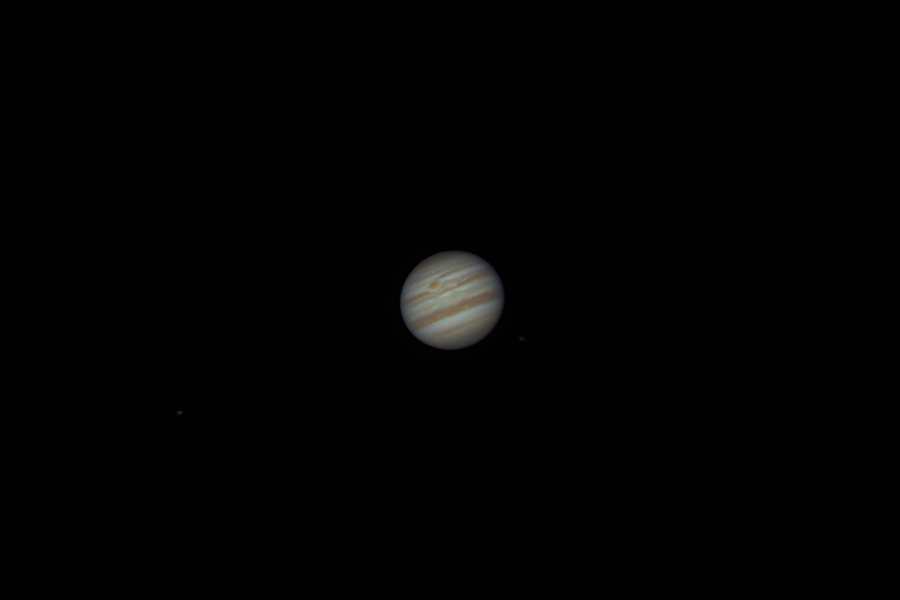October 5, 2025
NGC 253, Summer 2025
M29 as a Test
September 12, 2025
Titan Shadow Transit (Sept. 4, 2025)
Here are two finished images of Titan's shadow transiting Saturn. These were gathered between 6 and 7 a.m. UTC (1 and 2 a.m. CDT) from my backyard. With events like these, we take conditions as they come: the sky was a bit hazy, and seeing was not great for more than a few seconds at a time. I'm happy to have some images.
CFF 290mm f/13.5 with a Dakin 1.5x Barlow lens; QHY5iii485c.
April 21, 2025
NGC 2903 (March 2025)
This not-very-deep image is just over 2.5 hours of 300-second exposures with the 203mm Synta-ONTC Newtonian at f/4.95 and the Player One Uranus C Pro. The night was hazy, and the haze made imaging harder, I believe; this really is what the camera recorded.
April 2, 2025
M51 after months of change, work, and clouds, March 2025
Here is a quick M51, just 10x5' with the Player One Uranus C Pro camera and Baader MPCC II-corrected 203mm Synta-ONTC Newtonian. About two years ago, my old camera broke; a year ago, I replaced my laptop; and six months ago, I bought a CMOS camera. My long-time capture app, Nebulosity, is no longer updated and will not work on the new laptop. So I've begun using SharpCap Pro for the new camera, and it works fine, but the learning curve has been tough to climb while working full-time and any number of wonderful family events. (Also, I've been working through the Herschel 400 list visually, and that has definitely taken some nights.) The resolution with the C Pro and the Newt is very high: 0.595" per pixel, higher than any other setup I've used. My seeing will not be up to it on some nights; I'm still thinking around that.
December 29, 2024
December 23, 2024
M33, Fall 2024
This is first light with the TS 102SD, native at f/11 but telecompressed to f/6.93. This is also first light with a Player One Uranus C Pro camera. I haven't had a camera in a while. So far, I'm impressed with this one. This is 41x300s.







